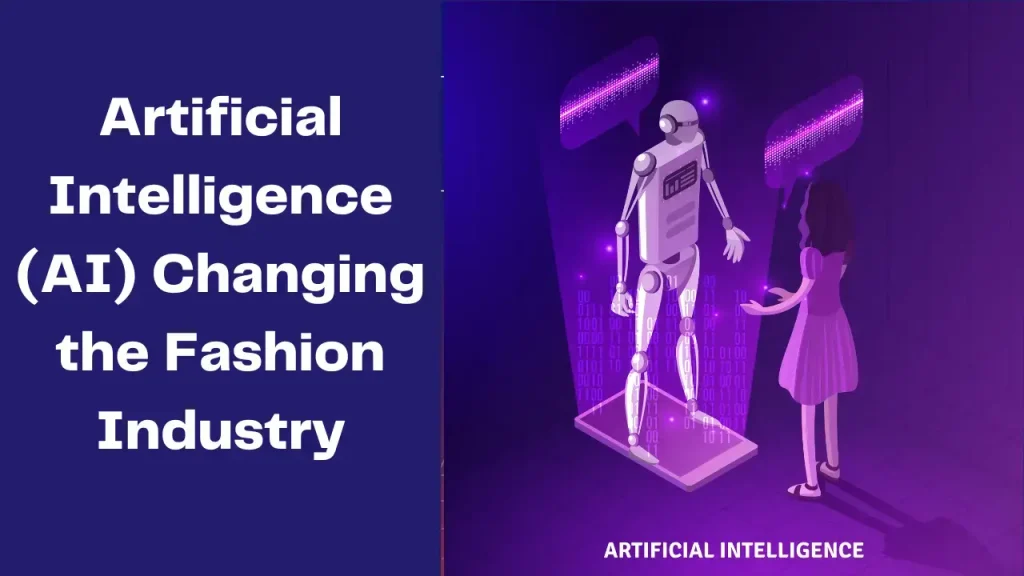By analyzing consumer behavior and preferences, AI enables brands to deliver highly personalized outfit recommendations and shopping experiences.
AI-powered machines enhance garment quality, reduce production errors, and improve sustainability by optimizing energy and material usage.
Designers now use AI to analyze trends, generate design concepts, and reduce manual effort—leading to faster, more efficient apparel creation.
From inventory management to demand forecasting, AI improves operational efficiency and helps retailers provide better customer service.
Despite its benefits, AI adoption poses challenges like workforce displacement, potential creativity loss, and high implementation costs—requiring balanced integration.
AI (Artificial Intelligence) is changing, transforming or revolutionising the world around us. As a user of AI in some form, you would get to hear such sentences frequently. The Google Maps we use, and the preferential suggestions we get across YouTube, Facebook, etc., are all examples of AI in our routine life. And that is only the beginning! Indeed, AI is slated to become the future of the world in a few years.

But did you know AI is also shaping up the future of the fashion industry? Yes. From the company to the consumer, AI has already entered every aspect of the fashion industry. And it is changing its face forever! Figures speak for AI’s growth in fashion. According to reports, global AI in fashion has registered a compound annual growth rate of 38-40 per cent from 2022 to 2024. So, let’s overview some aspects of AI’s entry into fashion.
In simple words, AI refers to mimicking human intelligence. It involves using a machine’s ability to perform cognitive functions, usually concerned with the human brain.
AI’s entry into fashion is relatively new yet rapidly growing and evolving. It has several applications across various areas from apparel design to retail.
For instance, when it comes to designing outfits, AI can identify new trends with demand in projecting new trends, thus significantly reducing the forecasting error.
On the other hand, AI can play a vital role in manufacturing as well. AI-enabled robots and machines can quickly stitch fabrics with precision, while simultaneously detecting errors and enhancing outfit quality. It can help save companies millions, especially in cases where consignments face rejections for trivial manufacturing defects.
Other examples of AI’s application in fashion include personalising apparel. AI algorithms can analyse and use data across aspects like buying history, social media activity, etc., to understand their preferences, likes and dislikes. The result is more personalised and closely aligned recommendations are provided which are likely to resonate with them individually.
AI can also help transform retail buying experiences. For instance, AI can provide insights into shopping behaviours and preferences, enabling retailers to deliver a more personalised and meaningful shopping experience. Concepts like AR/VR are further helping consumers virtually visualise an attire on them before they buy it.

The above applications speak for AI’s relevance in fashion. But let’s highlight them separately for a better understanding of the benefits of Ai in fashion.
The most prominent benefit of AI in fashion is its ability to personalise. AI, with its exceptional analytical and decision-making capabilities, can help manufacturers and retailers personalise the fashion experience through precise and action-driven customer insights. While manufacturers would produce what’s trending, retailers would sell it, thus delighting the customer and creating a win-win situation for everyone.
AI-enabled machines used in manufacturing outfits can help identify errors, thus preventing defective apparel from reaching the market. In times where quality can make or break a manufacturer’s reputation, AI proves a critical advantage.
AI can help fashion apparel manufacturers embrace sustainability by optimising their supply chain and production process. Data analytics can help them identify waste reduction areas and those where manufacturers can enhance energy efficiency.
AI-driven analytics help manufacturers, supply chain players and retailers make informed decisions based on insights received. It can help eliminate instinct-based decision-making and the risks associated with it.
Improved customer service is the result of personalised products and shopping experiences. Consumers would be encouraged to return to a particular brand for its personalised outfits and highly engaging customer experience. It is possible through AI.
Leveraging technologies AR/VR can expedite the consumer’s decision-making process and potentially accelerate the pace of sales.
Outfit designing is a creative process that involves trial and error. But AI can help expedite the design process and make it more effective and efficient. AI algorithms can analyse massive amounts of data from various virtual sources. The data includes consumer buying patterns, searches, trends, etc.
In addition, it can generate design concepts per inputs like fabric, colour, etc., thus saving much of the designer’s time and effort. Designers can use the time and effort saved here to focus on refining the designs, rather than working it out from the beginning.
Garment manufacturing is a labour- and resource-intensive process. There’s an exigent need for the fashion industry to embrace sustainable practices to reduce the impact of apparel production on the environment. Not only that, but apparel manufacturers deal with many other concerns like quality, volume, and consumer acceptance (considering the dynamicity of the fashion trade).
AI can prove a one-stop solution to all these concerns. Some areas where AI can help transform the apparel manufacturing process include the following.
The fashion supply chain is a complex web of various intertwined and disparate elements and stakeholders. Inefficiencies of any kind in the fashion supply chain can affect product delivery, revenues and customer dissatisfaction.
Integrating AI in the supply chain can help the fashion industry optimise its supply chain through analytics and value-driven insights. Some ways through which AI can positively contribute to the fashion supply chain include demand forecasting, quality control, inventory management and logistics optimisation. It can contribute to the supply chain’s efficacy, thus helping companies achieve the desired value and revenue.
Every technology has its set of benefits and challenges. The use of AI in fashion isn’t an exception to this fact. Let’s review some challenges of AI in fashion.
AI is disruptive. Its intelligent algorithms can replace designers, manufacturing workforce, marketers, etc., thus resulting in mass job losses and unemployment. Here, the need of the hour is to embrace AI while ensuring little to no impact on the already employed human resources and talent.
AI algorithms can perform many tasks. Yes, that’s without a doubt. But with AI algorithms driving design and marketing decisions, fashion can potentially become more homogenised. It will become less personalised and creative, leading to a massive decline in the quality of fashion products.
Now, it is up to the industry to decide the extent of dependence on AI. The purpose of using AI is to enhance offerings. Accordingly, the fashion industry should focus on creativity and diversity while looking to accomplish quality, volume and revenue goals.
Adopting any technology at any scale demands a significant investment. It includes AI as well. Deploying AI-driven machines, robots, analytics, etc., requires a considerable investment. Not every company would have the financial muscle to do it. In situations like these, the adoption of AI would remain half-hearted.
So, how will AI fare in the fashion industry? While it will continue to grow, here are some ways through which AI can power the future of fashion.
AI will help optimise manufacturing practices, reduce waste, improve the supply chain, and enhance production efficiency, thus promoting sustainability in the long run.
AI-based analytics can provide makers with insights, helping them create customised fashion items, drive sales and improve customer experience.
Marketers will increasingly leverage influencer marketing campaigns via social media analytics. While helping them design personalised campaigns, it can also enable them to identify the most influential bloggers and social media stars for a particular product.
As mentioned above, the use of AR/VR can help them try a particular outfit virtually from the comfort of their home. It can accelerate the buying decision-making process.
AI undoubtedly has a bright future in the fashion industry. On the one hand, it offers several benefits. But on the other, its challenges can impact the industry in the long run. Thus, while focusing on its technical, commercial and strategic benefits fashion players across every level should also emphasise safeguarding the interests of human resources, creativity, and diversity of the fashion industry, making it a vibrant industry.
The purpose of technology should be inclusive of growth and progress! Using AI sensibly, responsibly and rationally can help promote holistic objectives. You would alo like How to start fashion brand in india You can also apply online and offline too for design courses from one of the Best designing Institute in Pune-NIF Pune Kothrud.
AI is used to predict fashion trends, generate new design ideas, automate garment manufacturing, and personalize clothing recommendations for consumers.
While AI can assist with data-driven design and automation, it cannot fully replace human creativity. Designers still play a crucial role in bringing innovation and emotional connection to fashion.
AI reduces fabric waste, improves energy efficiency, and optimizes supply chains—helping fashion brands implement more eco-friendly production practices.
Yes, adopting AI technologies can be costly initially due to hardware, software, and training needs. However, it can offer long-term savings through automation and efficiency.
Richa is a multi-faceted personality who works as a fashion consultant, designer, and trainer. While being experienced in her profession, Richa also is a passionate trainer who shares her thoughts, and experiences and helps students build the skills required to work independently. Richa considers teaching her passion and thoroughly enjoys teaching at NIF Global Kothrud Pune.
